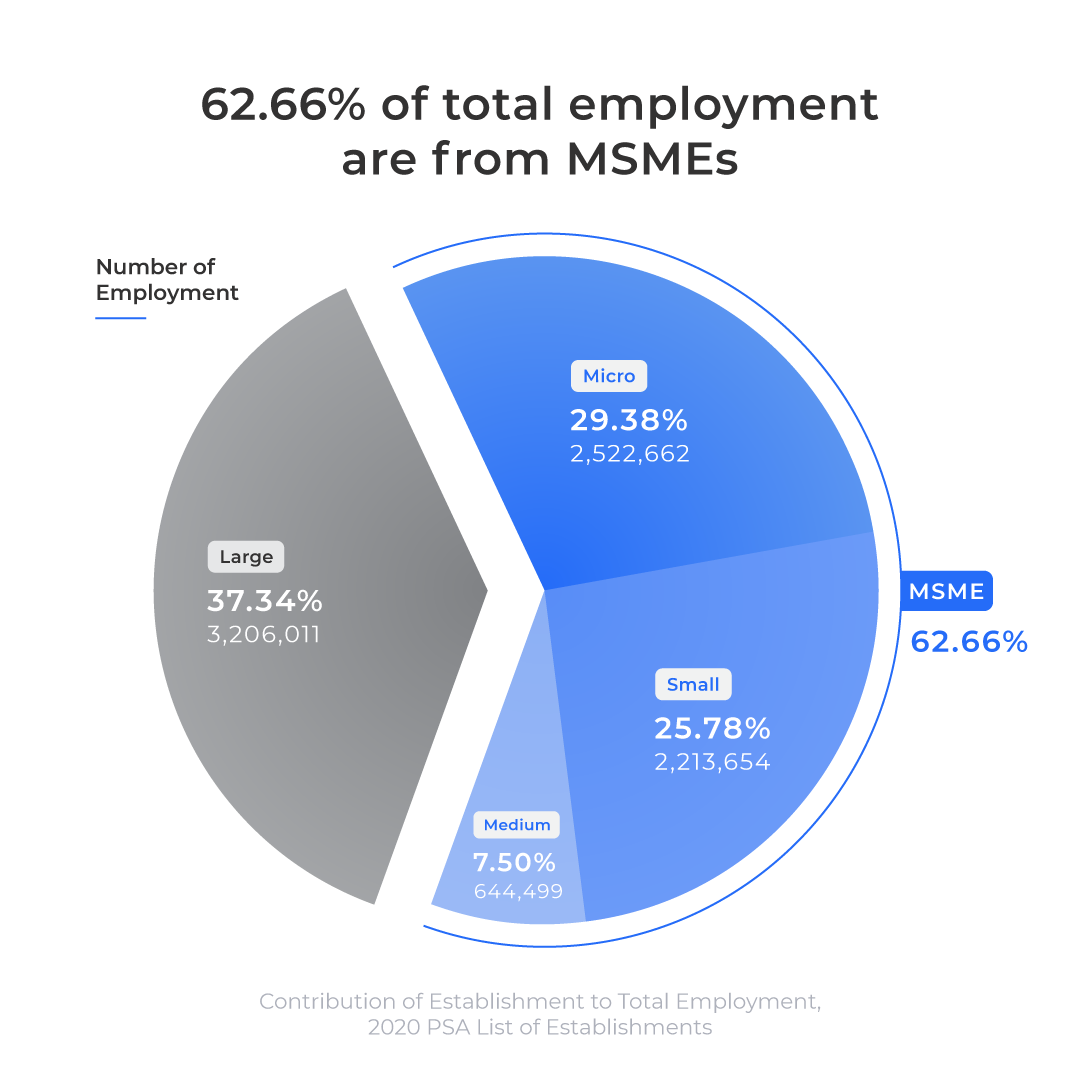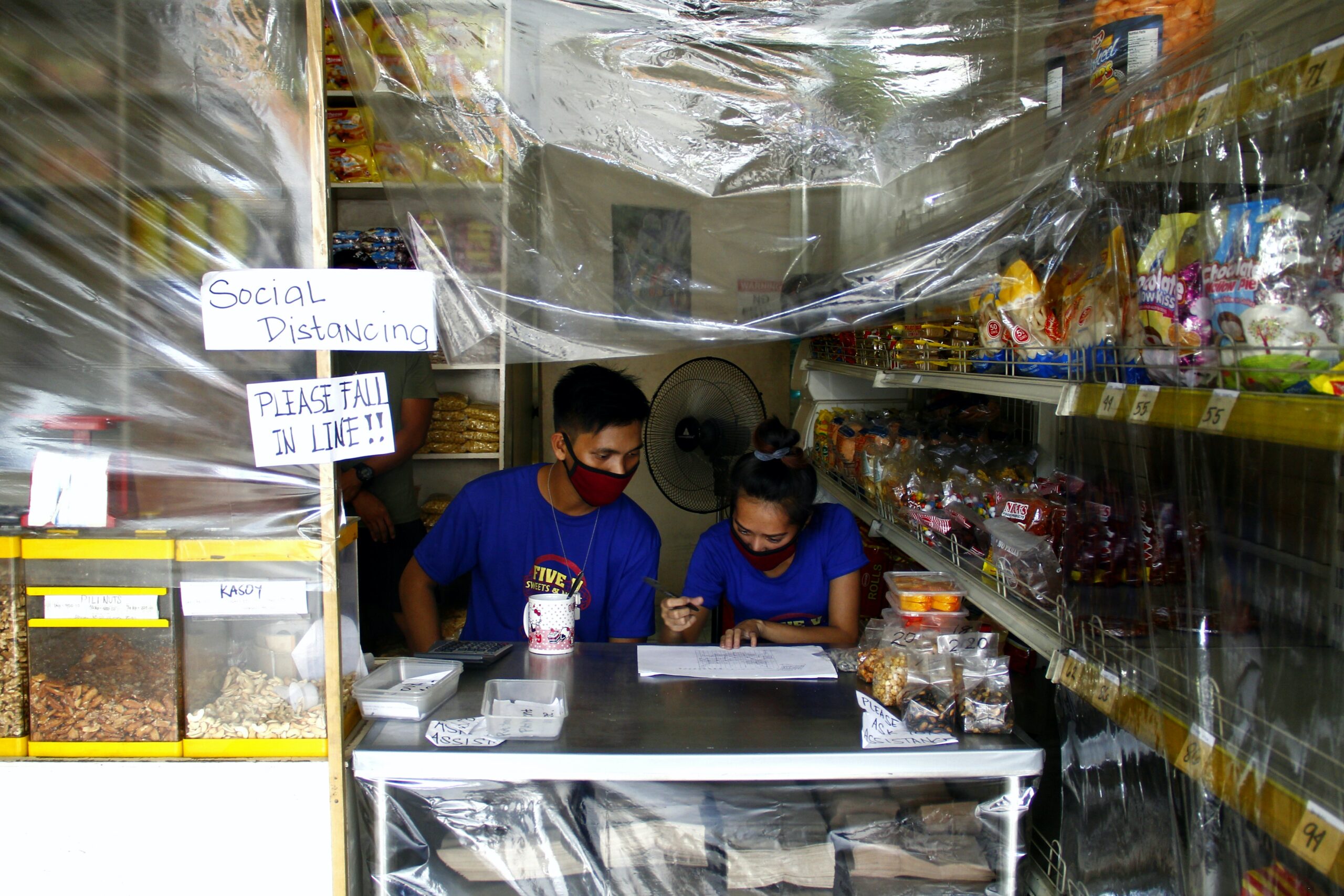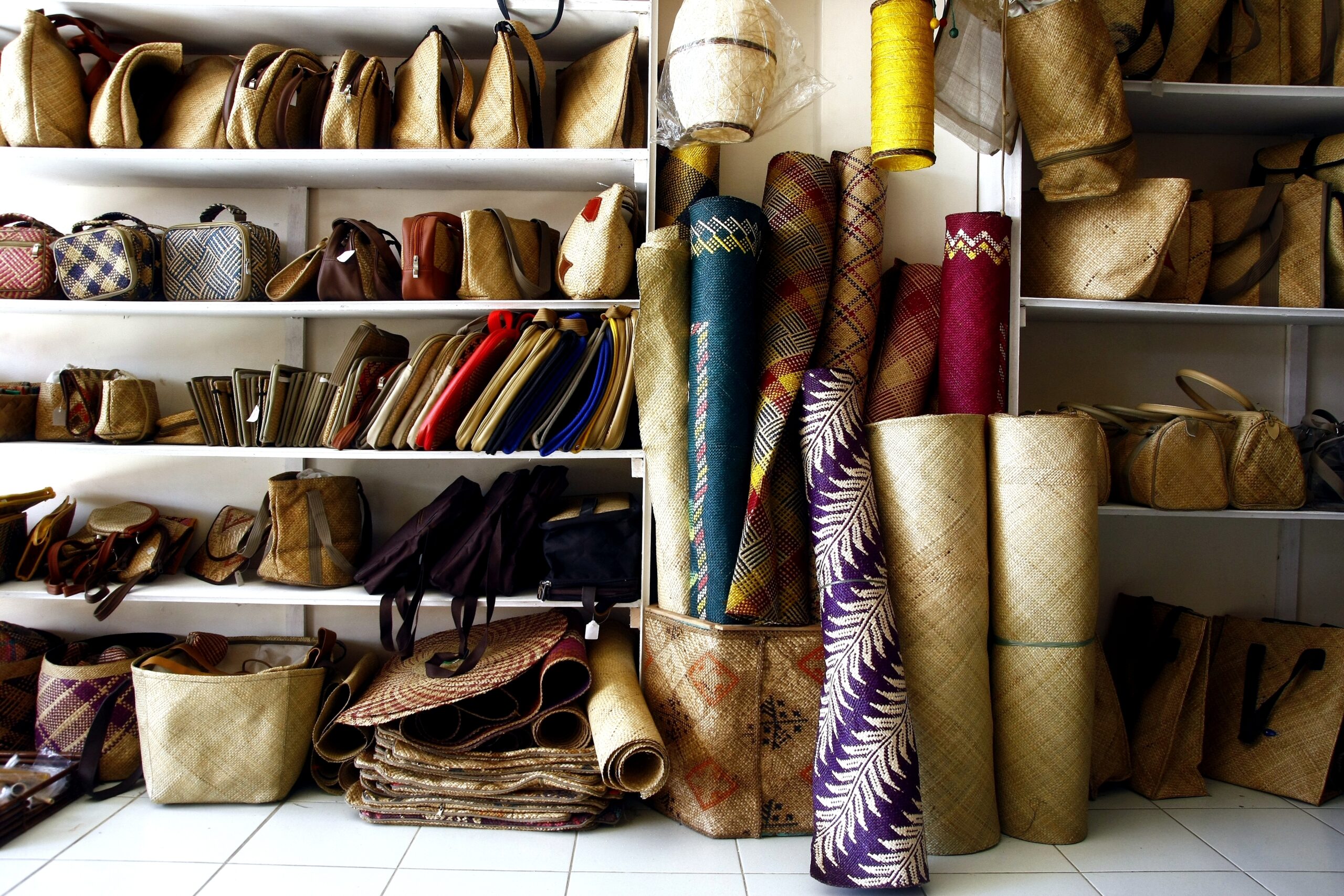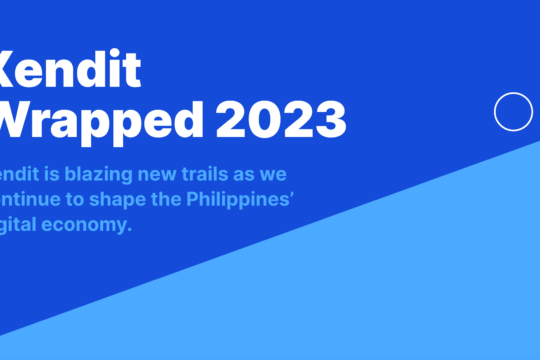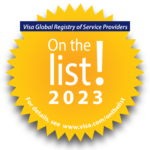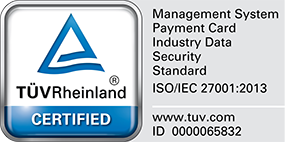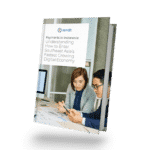The micro, small, and medium enterprises collectively known as MSMEs are considered the backbone of the Philippine economy. They comprise 99% of all the businesses in the Philippines, according to the Philippines’ Department of Trade and Industry (DTI). Given their scope, it is no wonder that they are also some of the biggest employers in the country, generating more than 5 million jobs and accounting for nearly 63% of the country’s total employment.
With digital acceleration driving the growth of e-commerce, more job opportunities are set to be created by MSMEs, especially those that can adapt to the changing business landscape.
The MSMEs in the Philippines
By definition, MSMEs in the Philippines are businesses engaged in industry, agri-business and/ or services with assets ranging from P 3-Million to P 100-Million, regardless of the type of ownership. These businesses include food and accommodations, manufacturing, and retail trade among others.
MSMEs help drive economic activity in the communities where they operate. While you can certainly name at least one of these establishments in your locality, many MSMEs in the Philippines actually don’t have their own offices and are run from the homes of the owners. This kind of flexibility extends to their operations, where they are more inclined and quicker to innovate with products and services that would fit the market preferences, without being bound to the rules of much bigger businesses. This has helped a lot of MSMEs stay in business amid the pandemic disruption.
Technology driving the better normal
Having the longest lockdown in the world during the COVID-19 pandemic certainly affected a lot of MSMEs in the Philippines. Those that failed to adapt to the situation have been forced to close down. But the same lockdowns that served as a litmus test to businesses whether they are geared towards the future or not, also powered the growth of businesses that were able to ride the wave of digital acceleration.
Based on a report by Google, Temasek, and Bain & Co., the Philippines is now the fastest growing internet economy in Southeast Asia. The continuous lockdowns have spurred the adoption of digital services and boosted e-commerce, with businesses going online in order to reach more customers when community quarantine rules make in person business transactions hardly possible.
When the pandemic started in March 2020, 12 million new digital consumers have benefitted from e-commerce. Of this number, 63% are actually from the provinces, proving how e-commerce has expanded the customer base of many businesses versus in-person transactions. The number of digital consumers are expected to grow, as newer digital users are becoming engaged with e-commerce, while early adopters expressed they will continue to transact digitally even after the pandemic.
E-Commerce is for Easy Commerce
The government recognises the importance of making e-commerce easy in sustaining MSMEs and making them pandemic-proof. In order to help them cater to the growing demands of customers both online and offline, DTI has recently launched its digital transformation toolkit. The toolkit includes a technology section that asks about the tools available and currently used by entrepreneurs. It also has a 3Ps section tackling the entrepreneur’s perception towards digital transformation pillars, namely people, process and product. Lastly, a final scorecard helps identify the digital transformation type the business is currently undergoing.
This checklist aims to serve as a self-assessment tool for MSMEs to evaluate the level of digitalisation of their business and figure out which areas they can improve on.
The tool kit was derived from the Baseline Digitalisation Survey about MSMEs in the Philippines conducted by the government. The survey measured the level of digitalisation of businesses.
The basic level corresponds to the use of basic digital tools such as office computer tools, email, messaging apps, and mobile phones. The intermediate level corresponds to businesses having online presence, which means having a website, social media, e-commerce sites, among others. Finally, the advanced digital businesses are those that include automation, mobile point-of-sale terminals, imaging devices, and other strategies best suited for online businesses. Majority of the MSMEs surveyed have basic digitalisation (56%), while the rest are intermediate (34%) and even fewer are advanced (10%).
This means businesses that are still at the basic level of digitalisation have a lot of untapped potential for future growth.
Making E-commerce Easy with Xendit
Advancing a business’ level of digitalisation has become easier than ever. With the rise of various payment options in the country, businesses can now operate both online and offline.
This is where Xendit can help you upgrade your level of digitalisation. By enabling a host of payment options including e-wallets, credit cards, bank transfers, or over the counter payments, you can be sure your transactions run smoothly while you spend more time innovating and growing your business.

